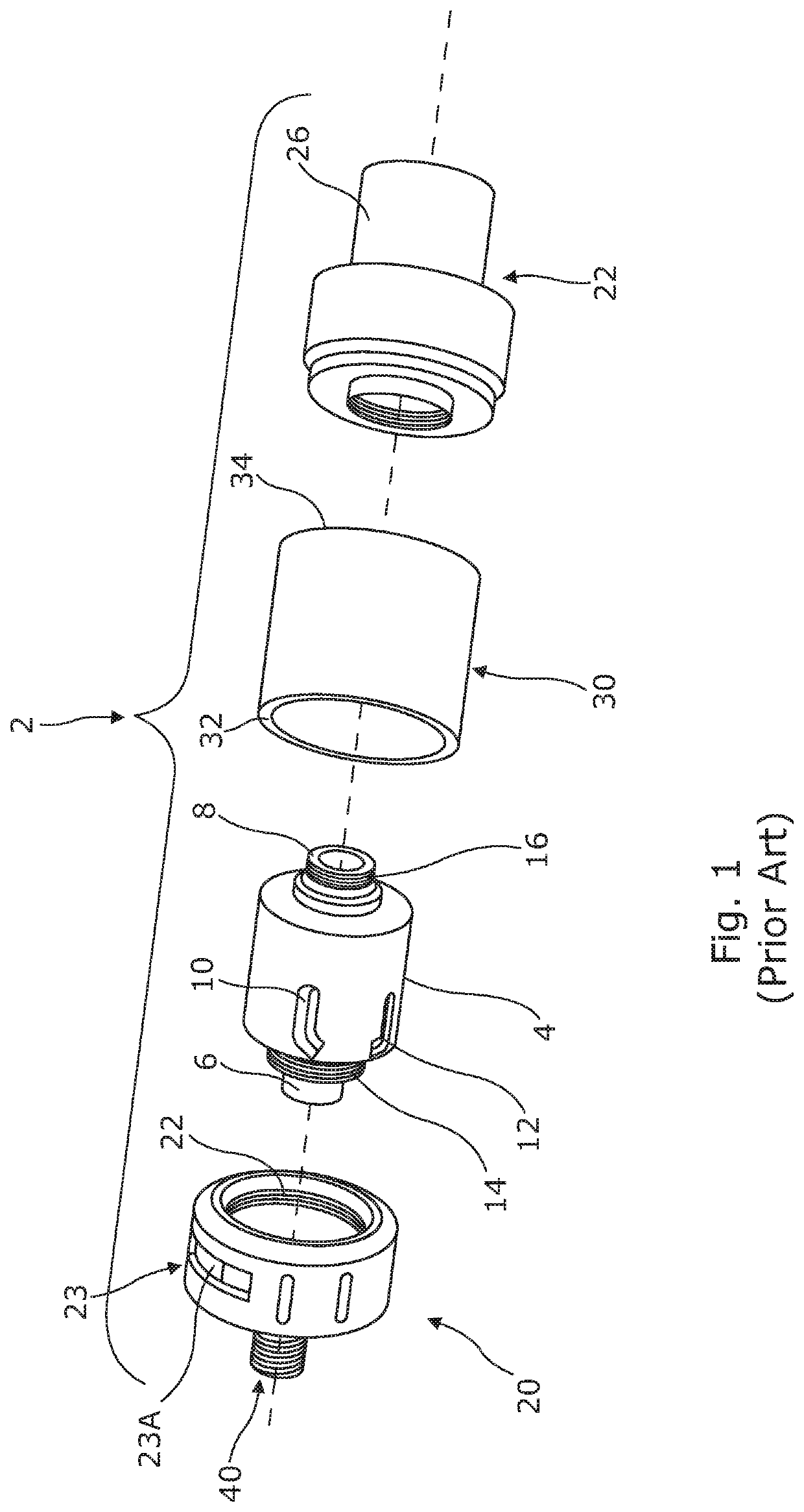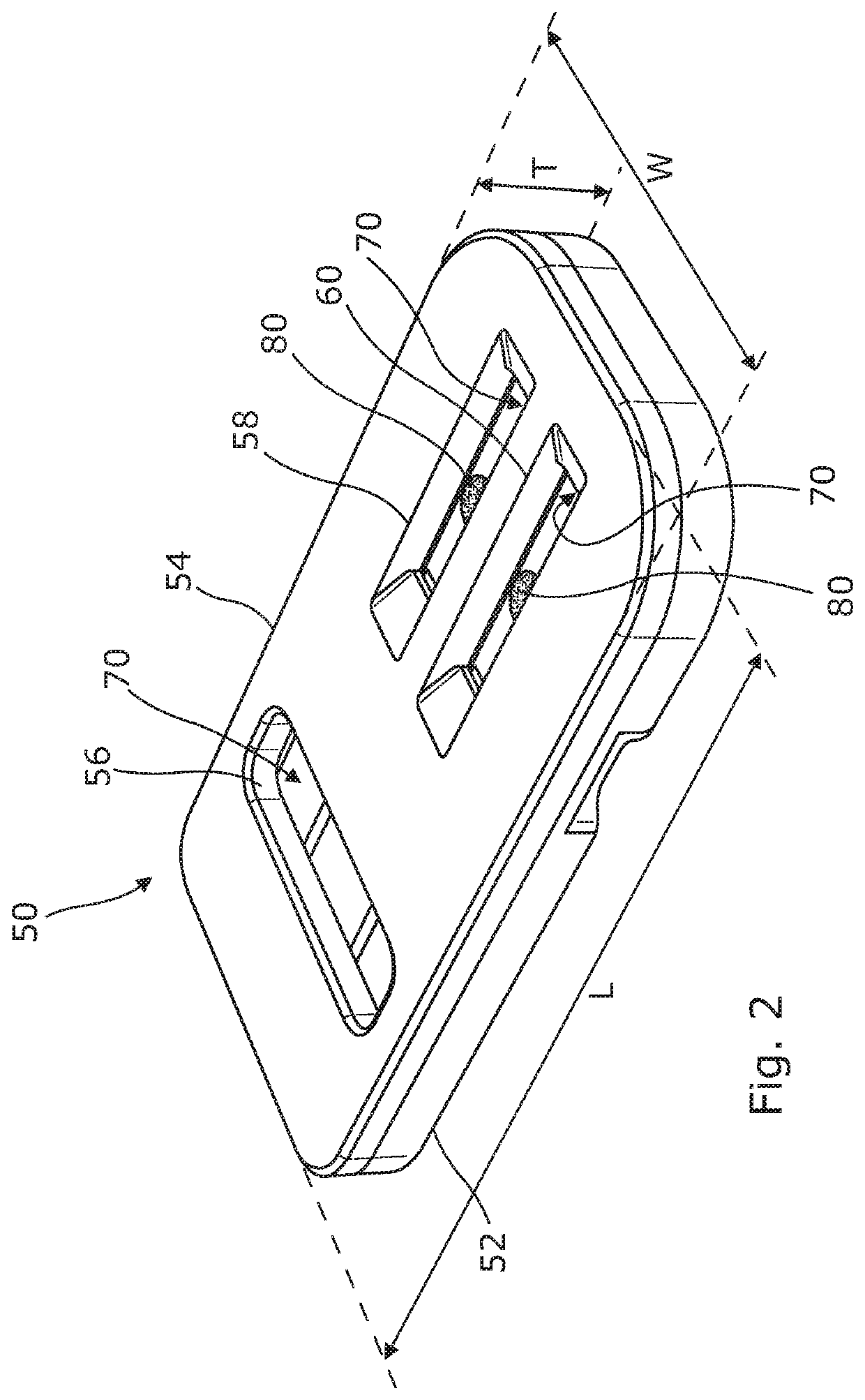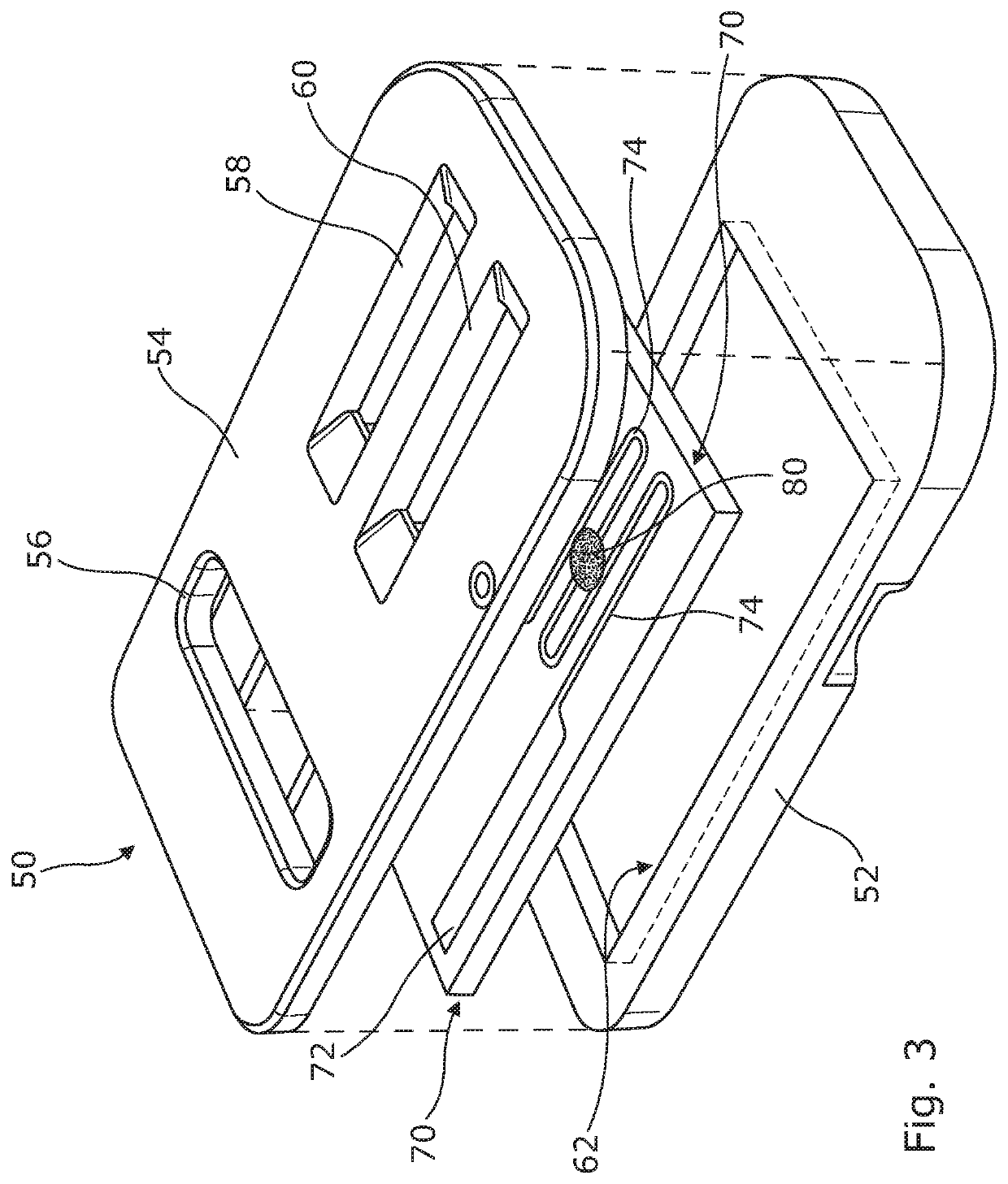A Mouthpiece Assembly for an Inhalation Device including a Replaceable Substrate Component, and a Replaceable Substrate Component therefor
a mouthpiece and inhalation device technology, applied in the direction of applications, tobacco pipes, tobacco, etc., can solve the problems of high nicotine content, uneven aerosolisation of absorbed liquid along the length of the wick, and serious toxic reactions, so as to reduce the overall quantity of aerosol inhaled, accurate measurement, and reduce the volumetric quantity of carrier compounds
- Summary
- Abstract
- Description
- Claims
- Application Information
AI Technical Summary
Benefits of technology
Problems solved by technology
Method used
Image
Examples
Embodiment Construction
lass="d_n">[0041]Referring firstly to FIG. 1, there is shown an exploded perspective view of a cartomizer assembly 2 of the prior art, in particular a cartomizer forming part of a prior art ENDS sold under the trade name “SMOK®” and manufactured by Shenzhen IVPS Technology Co. Ltd. Cartomizer 2 consists of a cylindrical cartridge 4 within which a cylindrical wick and coil arrangement (not shown) is centrally disposed and defines a hollow cylindrical interior which is open at first and second ends 6, 8. The cylindrical cartridge 4 is provided with a plurality of axial slots, two of which are referenced at 10, 12 and it is by means of such slots that exterior surfaces of the absorbent wick are exposed to the liquid nicotine-containing formulation which the cartomizer is adapted to receive prior to use. Screw threaded portions 14, 16 are provided at either end of the cartridge which facilitate secure connections to, on the one hand, an air flow regulator component 20 and on the other h...
PUM
 Login to View More
Login to View More Abstract
Description
Claims
Application Information
 Login to View More
Login to View More - R&D
- Intellectual Property
- Life Sciences
- Materials
- Tech Scout
- Unparalleled Data Quality
- Higher Quality Content
- 60% Fewer Hallucinations
Browse by: Latest US Patents, China's latest patents, Technical Efficacy Thesaurus, Application Domain, Technology Topic, Popular Technical Reports.
© 2025 PatSnap. All rights reserved.Legal|Privacy policy|Modern Slavery Act Transparency Statement|Sitemap|About US| Contact US: help@patsnap.com



